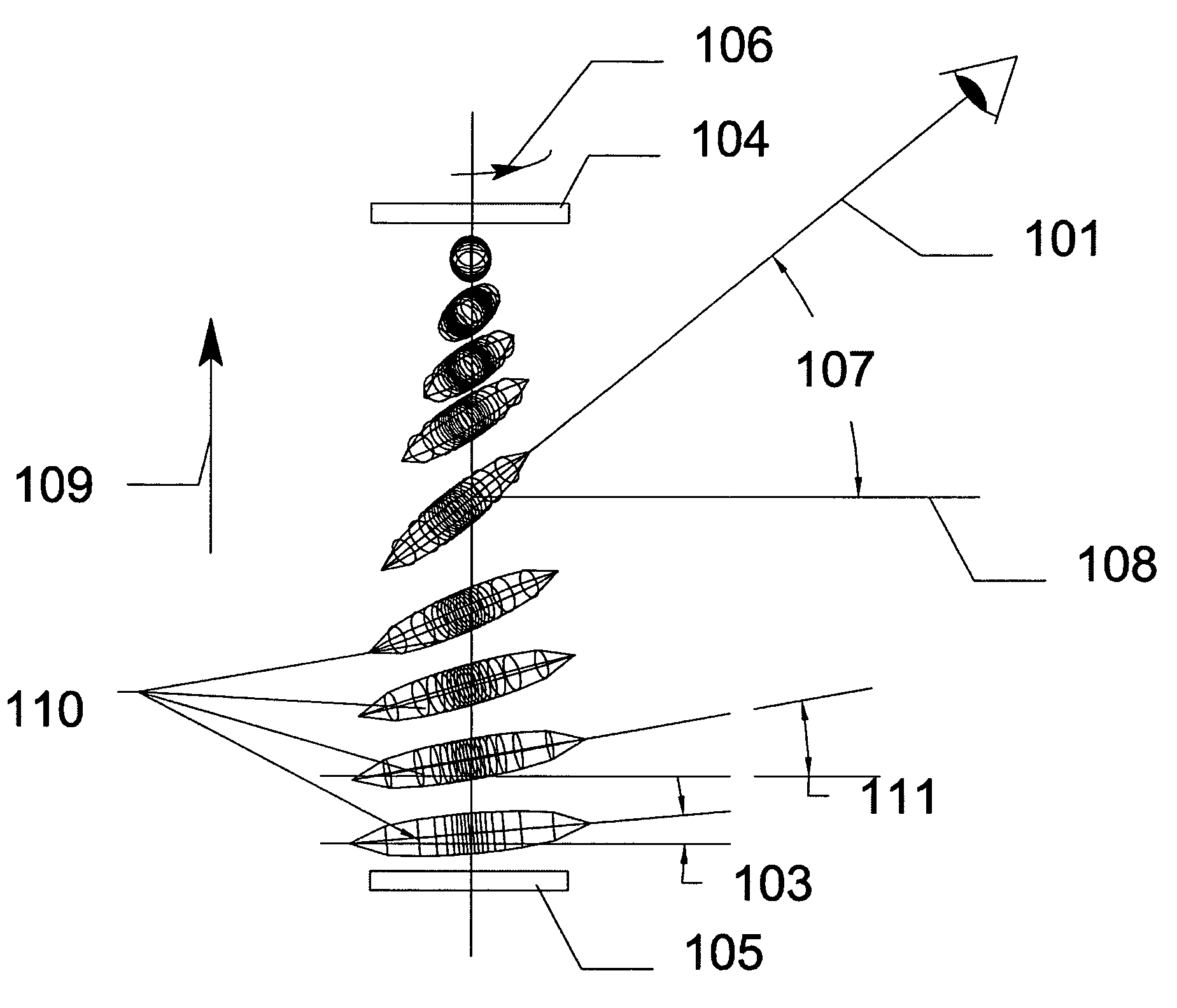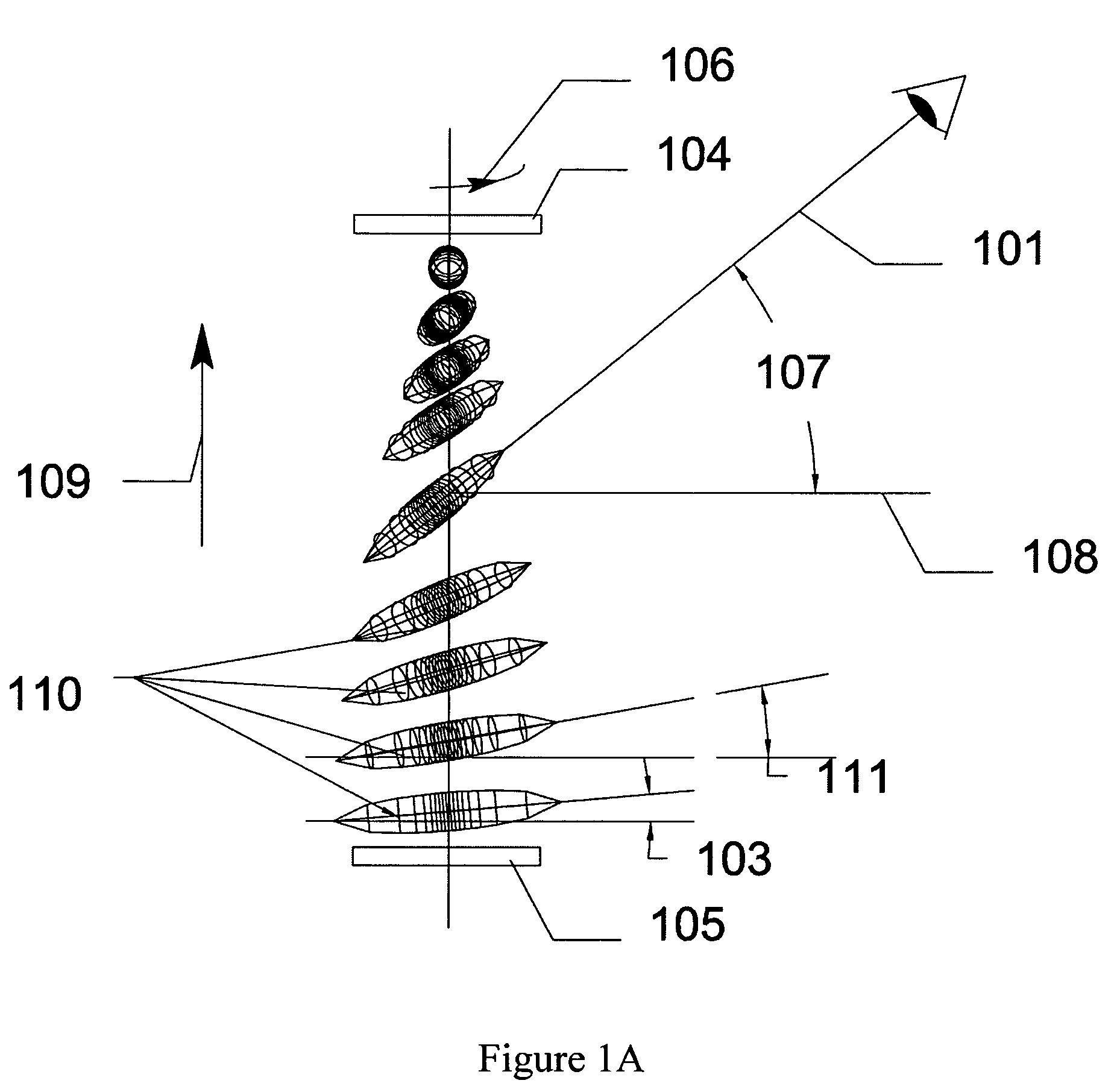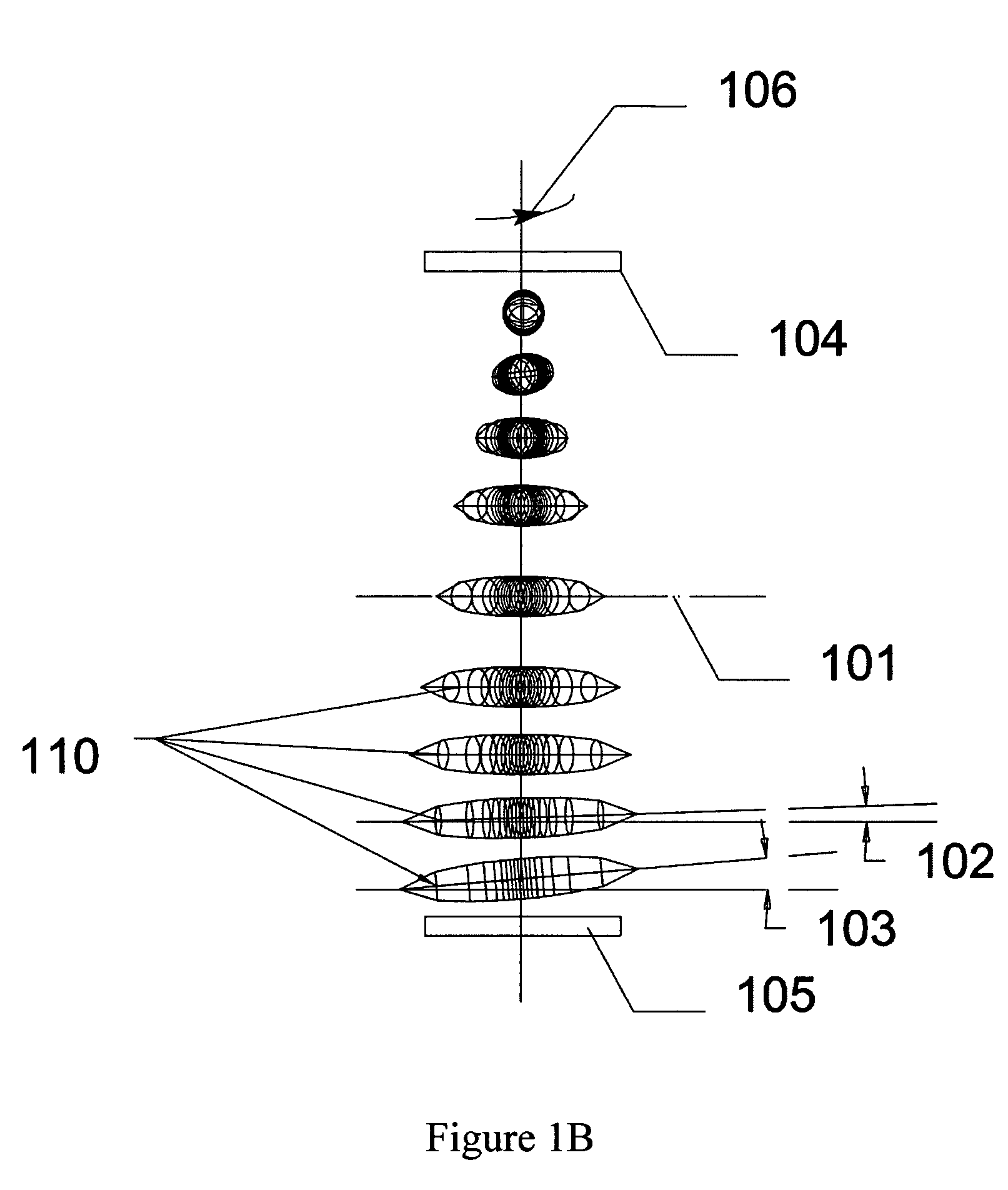Liquid crystal display with offset viewing cone
a liquid crystal display and viewing cone technology, applied in liquid crystal compositions, instruments, chemistry apparatus and processes, etc., can solve the problems of nb mode, achromatic light output in the optically active state of the liquid crystal display, and consuming minimum energy,
- Summary
- Abstract
- Description
- Claims
- Application Information
AI Technical Summary
Benefits of technology
Problems solved by technology
Method used
Image
Examples
Embodiment Construction
[0031]The present invention provides a highly effective liquid crystal display with a directed, offset viewing cone, which is simple and easy to fabricate. The liquid crystal display of the invention can be transmissive, reflective or transflective, and is capable of deflection of the viewing cone of maximal image contrast and brightness to a selected off-normal direction. Particularly, the transmissive variant allows deflection of the viewing cone from the straight light path, while the reflective variant allows deflection of the viewing cone from the mirror-like light path. This capability can be used in image display devices of various purposes, especially where such devices must be located in an offset position relative to the viewer.
[0032]The liquid crystal display of the invention comprises a plurality of layers, particularly, liquid crystal, substrates, polarizers, electrodes, and alignment layers etc. The liquid crystal layer is substantially the twisted nematic liquid cryst...
PUM
 Login to View More
Login to View More Abstract
Description
Claims
Application Information
 Login to View More
Login to View More - R&D
- Intellectual Property
- Life Sciences
- Materials
- Tech Scout
- Unparalleled Data Quality
- Higher Quality Content
- 60% Fewer Hallucinations
Browse by: Latest US Patents, China's latest patents, Technical Efficacy Thesaurus, Application Domain, Technology Topic, Popular Technical Reports.
© 2025 PatSnap. All rights reserved.Legal|Privacy policy|Modern Slavery Act Transparency Statement|Sitemap|About US| Contact US: help@patsnap.com



